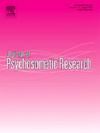Interoceptive sensibility in stroke patients: Latent profile analysis and influencing factors
IF 3.5
2区 医学
Q2 PSYCHIATRY
引用次数: 0
Abstract
Aim
This study aimed to explore the latent categories of interoceptive sensibility in patients with stroke and analyze its influencing factors.
Methods
A cross-sectional study was conducted using a convenience sample of 417 patients with stroke in a tertiary hospital in Zunyi from June to October 2024. Socio-demographic information and interoceptive sensibility of participants were obtained using a general information questionnaire and the multidimensional assessment of the interoceptive awareness scale. Latent profile analysis was used to analyze the latent categories of interoceptive sensibility in patients with stroke. In the multiple logistic regression analysis, the latent categories of interoceptive sensibility derived from latent profile analysis were used as the dependent variable to identify factors influencing these categories.
Results
The average interoceptive sensibility score of patients with stroke was 90.46 ± 44.93. Interoceptive sensibility in patients with stroke was classified as low (C1, 34.4 %), moderate (C2, 26.3 %), and high types (C3, 39.3 %). Multiple logistic regression demonstrated that self-efficacy, health literacy, self-care capability, and family monthly income were predictors of the participants' latent categories of interoceptive sensibility.
Conclusion
In patients with stroke, interoceptive sensibility can be categorized into three distinct profiles: high, moderate and low-interoceptive sensibility group. Intervention measures are implemented according to their different demographic characteristics to improve their ability to interpret internal body signals and improve self-management and recovery.
脑卒中患者内感受性:潜在特征分析及影响因素
目的探讨脑卒中患者内感受性的潜在类别,并分析其影响因素。方法对2024年6 - 10月遵义市某三级医院收治的417例脑卒中患者进行横断面研究。通过一般信息问卷和内感受意识量表的多维度评估,获得被试的社会人口学信息和内感受感性。采用隐型分析分析脑卒中患者内感受性的隐型。在多元逻辑回归分析中,利用潜在特征分析得出的内感受性潜在类别作为因变量,确定影响这些类别的因素。结果脑卒中患者的内感受性平均得分为90.46±44.93分。脑卒中患者的内感受性分为低(C1型,34.4%)、中(C2型,26.3%)和高(C3型,39.3%)。多元逻辑回归结果显示,自我效能感、健康素养、自我照顾能力和家庭月收入是被试内在感受潜在类别的预测因子。结论脑卒中患者的内感受性可分为高、中、低3组。根据其不同的人口特征实施干预措施,提高其解读身体内部信号的能力,改善自我管理和康复。
本文章由计算机程序翻译,如有差异,请以英文原文为准。
求助全文
约1分钟内获得全文
求助全文
来源期刊
CiteScore
7.40
自引率
6.40%
发文量
314
审稿时长
6.2 weeks
期刊介绍:
The Journal of Psychosomatic Research is a multidisciplinary research journal covering all aspects of the relationships between psychology and medicine. The scope is broad and ranges from basic human biological and psychological research to evaluations of treatment and services. Papers will normally be concerned with illness or patients rather than studies of healthy populations. Studies concerning special populations, such as the elderly and children and adolescents, are welcome. In addition to peer-reviewed original papers, the journal publishes editorials, reviews, and other papers related to the journal''s aims.

 求助内容:
求助内容: 应助结果提醒方式:
应助结果提醒方式:


